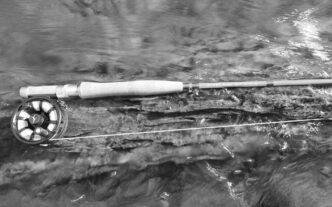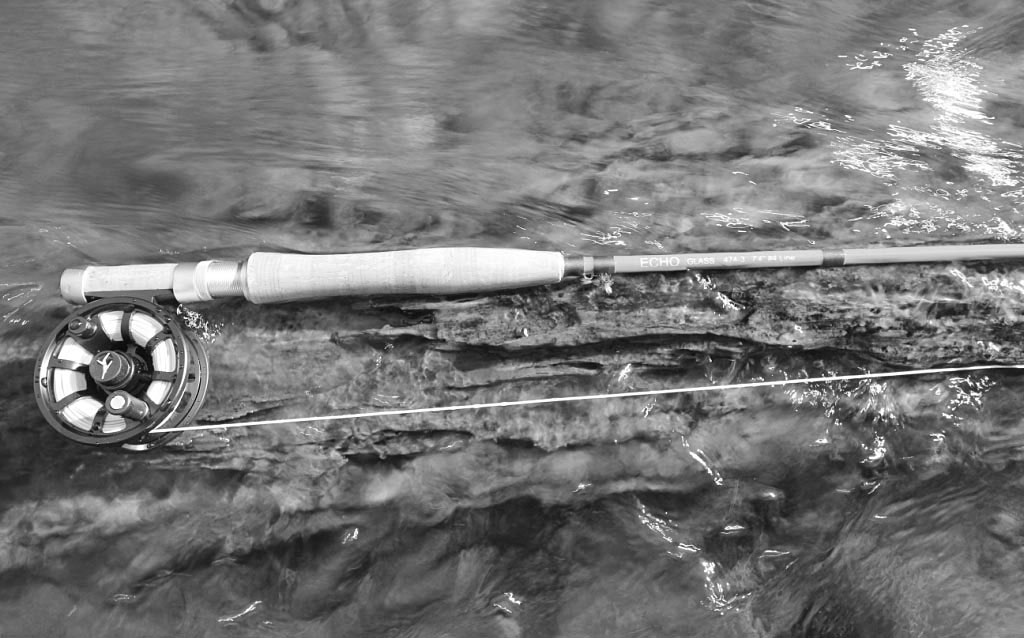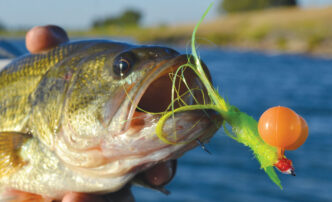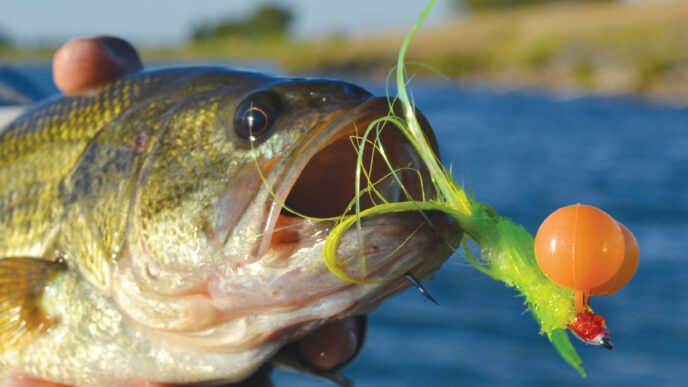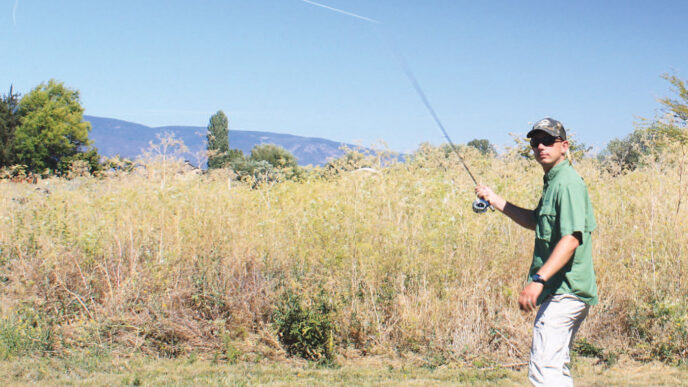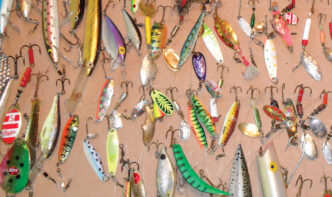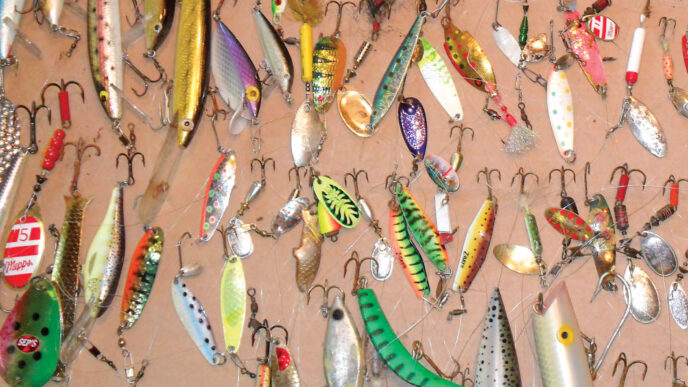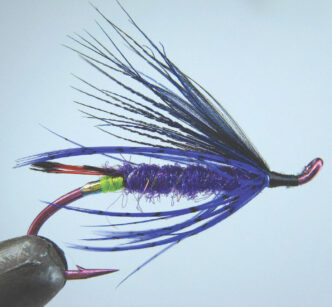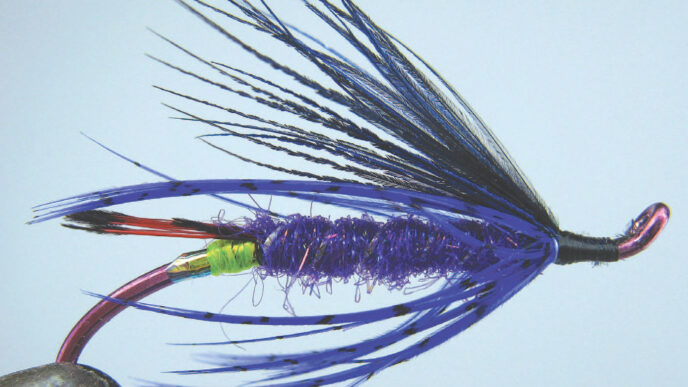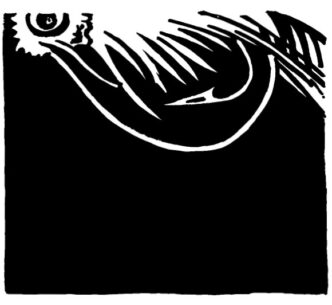Autumn brings with it some of the best fishing of the year, although this summer’s wildfires and low water may have an unpleasant impact. Will there, for example, be enough water in the Klamath/Trinity watersheds to support the salmon and steelhead runs many of us have been awaiting? Will campgrounds be closed, or air quality suffer, from palls of smoke in the mountains? Regardless of how all that plays out, what autumn also brings is a slew of new products from fly-tackle manufacturers, most of them introduced at the trade show put on by the fly-fishing industry’s trade association.
This year, after years of declining participation in a fly-only event, the show was held concurrently and in the same hall with ICAST, the International Convention of Allied Sportfishing Trades, which is the trade show for the conventional tackle folks. The idea was to see if more excitement could be generated by proximity to and synergy with a more active part of the fishing game. The show was also held in July, at least a month earlier than usual. That was a benefit to companies whose products are imported, because July provides more lead time for retailers to order and for shipping than later in the year. On the other hand, the early date kept away some fly-tackle dealers who were reluctant to leave their shops at the height of the season or were annoyed at publicized launches of next year’s products before the final shipments of this year’s stuff arrived. But this is the fly-fishing industry, where complaints are as common as wind knots, and life will go on.
I spent a couple of days wandering the aisles of the combined show, most of it in the much smaller fly-tackle section at one end of the hall. Frankly, and not surprisingly, I didn’t see much interaction between the two sides of the show, save for a few saltwater fly guys ogling some interesting skiffs and motors over on the ICAST side. The mostly bass-oriented conventional-tackle folks stayed at their end of the hall, while the trout and salmon/steelhead folks stayed at the other end. A few manufacturers — Cortland and Simms, for example — had a presence at both ends of the hall, but that generally meant a big booth in the conventional section and a tiny display in the fly end, where someone could direct traffic to the main display. I suspect it’s going to take another couple of years and perhaps some heavy outreach by the two trade associations for any serious synergy to happen, if it’s going to happen at all.
The positive thing I brought home from the show was that there are going to be a lot of interesting new fly rods, reels, lines, and other necessary gizmos available shortly. Let’s look at fly rods first.
Fiberglass Resurgent
An interesting development in the rod category was the arrival of some neat new fiberglass trout rods. Despite a handful of virtues as a rod material, including greater flexibility and durability than graphite, fiberglass has been largely ignored since the early 1980s, when fast-action graphite took over the market. There have been some niche rod builders who worked in glass over the past 30 years, but few factory glass rods, most of which seemed a bit of an afterthought, a sop to oddballs and old guys who like a rod they can feel bend and that fishes softly. For the past few years, however, some larger rod companies, including Scott, Thomas & Thomas, Hardy, and Cabela’s, have started building excellent glass rods, and as of 2014, we can add Redington, Orvis, and Echo to the list. Where do you fish fiberglass? At the very least, anywhere a lightline rod of 8 feet or less makes sense and where you need to make accurate, delicate casts up to 40 feet with smaller flies. That’s a lot of trout water, methinks.
Redington’s new glass rod series is called Butterstick and features a smoothsanded, bright, almost metallic-gold blank with orange wraps. Stealthy looking they ain’t, but the 8-foot three-piece 5-weight I’ve been fooling with is a very pleasant, useful fly rod. It has a Western grip of good cork and a handsome wood uplocking reel seat. (Lighter models use a cork slide-band seat.) The tip is light enough to make short, delicate casts, and a firm middle lets the rod flex well down into the grip. The action is balanced enough to lay out a smooth line, and there’s enough diameter and stiffness in the butt section to support a firm stroke. Not everybody’s going to like the look, but it’s going to be hard to complain about performance. Along with the 8-foot 5-weight, Buttersticks are offered in five other three-piece models, from a 6-foot 2-inch 2-weight to a 7-foot 6-inch 4-weight, all at the very reasonable price of $249.95, including a cloth sack and cloth-covered plastic rod tube. Orvis didn’t exhibit in
Las Vegas, but loaned me one of their new Superfine fiberglass models: another 8-foot three-piece 5-weight, crafted in Orvis’s Manchester, Vermont, rod shop. Not surprisingly for Orvis, this is a conservatively appointed rod, with an unsanded, moss-green blank, medium-brownwrapped guides, and a script signature that (almost) looks hand inscribed. The grip, of very nice cork, is Orvis’s classic “superfine” shape, which tapers into the blank at the front, with the hook-keeper thread wrap bridging the blank-to-cork transition. The reel seat is bright anodized aluminum with a cork insert. Guides, including the stripper, are all chrome. The look is understated and, to my eyes, handsome, though you might not want to lay one down on a grassy riverbank without placing something bright next to it, or it will disappear. Glass rods don’t have to be slow or noodly, and the model I tried was light and quick in the hand. It won’t feel strange to folks whose only rod experience has been graphite. Where the Butterstick 8-foot 5weight clearly liked a standard weight-forward 5-weight line, I’d say the comparable Superfine is more comfortable on very short casts with something heavier, such as Orvis’s Superfine 5-weight line, or the Scientific Anglers GPX, both of which are half a line weight heavier up front to load faster rods. In addition to the 8-foot 5weight, there is a 7-foot 3-weight and an 7-foot 6-inch 4-weight, all three-piece rods and all priced at $395 with case and cloth sack.
Echo’s new fiberglass rod series, Echo Glass, is a somewhat slower group of rods than either the Butterstick or the Superfine glass, but like any rods that come from the restless brain of Tim Rajeff, they do the job for which they were intended: in this case, making soft, controlled casts at shorter fishing distances and protecting light tippets. Four models make up the line, from a 6-foot 3-inch 2-weight to 7foot 10-inch 5-weight, all three-piece rods and all attractively priced at $199. All of them are a trouty “golden caramel” color, with dark olive wraps and downlocking reel seats.

New Graphite Rods
OK, enough glass. What about graphite rods? Let’s start with Scott’s new Radian series. And before I proceed further, let me go all honest and disclose that a couple of decades ago, I was involved professionally with Scott. But while I retain affection for the company, I think I’m also particularly critical of their efforts. In the case of the Radian series, I can’t find anything about which to complain. Neither, apparently, did the other fly folks in Las Vegas when they voted the series Best of Show and Best Freshwater Rod.
The idea behind the Radian series, according to Jim Bartschi at Scott, was to rediscover the sense of touch, of feel, that was missing f rom most contemporary fast-action fly rods. To do so, Scott combined fast tapers and relatively large-diameter, thin-wall blanks with multimodulus layups, new, stronger resins, and a new technology — ReAct, they call it — that minimizes energy-sapping vibration and maximizes recovery speed. The result is a series of very light, quick, sensitive rods that retain a lot of feel and provide great feedback to the caster, both close up and far off. I tried half a dozen models, from a 4-weight to an 8-weight, and was struck not simply by how nicely they cast, but by how similar in feel they were to each other: sensitive, without any sensation that you were running out of gas when you pushed a rod hard. Radian rods have, as usual for Scott, an unsanded, “natural” blank and are wrapped in gray, but Scott dresses that up surprisingly well with orange trim wraps, really excellent cork, and, on light-line models, a pressure-treated box elder burl insert in a distinctive uplocking reel seat. (Rods for heavier line weights get black aluminum seats with short fighting butts.) All the rest of the appointments are top shelf, from titanium frame strippers and Snake brand Universal snake guides to butt-section measurement wraps, alignment dots at the ferrules, and a high quality of overall finish work. There are 16 models, all four-piece rods, from an 8-foot 6-inch 4-weight to a 10-foot 8-weight. At $795, Radians aren’t cheap, but if you have the shekels, you’ ll probably find them worth the price.
Sage introduced two new fly rod families at the show. The Method series replaces the TCX series as Sage’s top-end, ultrafast-action rod for demanding, advanced anglers. The language Sage uses to describe what goes into Method rods is similar to what Scott uses to describe Radians (and, to be fair, similar to what Sage originated a couple of years ago to describe its own One series). Language and manufacturing processes aside, what we’ve got is another striking-looking high-performance rod — a “magma red” blank with rust wraps trimmed in pewter — with topquality components and finish. The rods I cast were light, quick, and accurate, but to me lacked the touch of the Radians. That, of course, may not be what you want. A few f riends who’d tried both and like Methods better praised their fast action and smooth-sanded appearance. If you’re in the market for a top-end rod, you’d be a dummy not to try both and make your own decision. There are 12 Method models from 4-weight to 11-weight, all fourpiece rods, and nine switch and Spey models. They come in “a black rod sock with a red silk-screen and are protected in a fusion red powder-coated rod tube with a silver colored medallion and gloss black end caps.” Their retail price runs from $800 to $1,200.
Motive, Sage’s other new rod family, is a medium-priced line of strong-butted saltwater rods on which Sage wastes no fancy new marketing terms, but simply says that the rods are constructed from time-proven materials and embody Sage’s immense experience. Nothing wrong with that. Motives are built on a “bluefin blue” blank, with blue thread wraps and royal blue and black trim wraps. The level of finish and appearance is so good — no surprise there — that I thought at first I was looking at another $800 rod. You’ll have to cast one side by side to know the difference, if indeed you can feel a difference. Motives are all 9-foot four-piece rods, come in a blue-steel-colored nylon rod tube with divided liner, and cost $425.

At the midpriced end of the spectrum, Redington has traditionally offered good fly-rod performance and excellent value. Their new Vapen series of fast-action rods is no exception. Performance aside, the interesting feature of the Vapen series is the availability of the first really good synthetic handle material for fly rods. The Vapen “Red” series uses a polymer Power Grip that was developed in collaboration with golf-club grip company Winn Grips. It’s got great feel and texture, doesn’t slip when wet, cleans easily, and is said to reduce fatigue. Having tried it, I’m not sure I don’t prefer it to cork. Blasphemy! Of course the color Redington uses on Vapen Red is, well, red. That’s a bit over the top for many of us traditionalists, Stanford fans excepted. Still, I can see the material itself working well and looking good in more subtle colors on freshwater rods or in bright colors on rods for the salt. Kudos to Redington for coming up with a very good thing. Eight models are available, all four-piece rods, in lengths of 9 feet and 9 feet 6 inches for line weights 5 through 12. Vapen Reds cost $349.99, though the timid can buy plain old corkgripped Vapens for $50 less. The Vapen 9foot 8-weight, by the way, won Best Saltwater rod at the Las Vegas show.
St. Croix also introduced a rod series with a synthetic grip in their new Legend X lineup. These are beefy rods designed for casting big flies to, as St. Croix puts it, “the meanest predatory fish.” I expect that means muskies and pike, since that’s what swims up in Baja Canada, where St. Croix is located. But there’s no reason why they shouldn’t work anywhere else where the fish haven’t learned to be nice. The grip on these models for 7-weight through 10weight lines is covered in Xtreme-Skin — a surface material applied over a precisionmachined, Wells-shaped rigid core. The grip is said to be more sensitive than cork, to repel water, dirt, and fish slime, and to clean up easily. Personally, I found the handle surface to be a bit more rigid and slippery than I prefer, but that was on a casting pond, not on the water, so I guess the jury’s still out. Four models are available, all 9-foot, four-piece rods, for line weights 7 through 10, at $480 and $490.
Orvis has added switch rods for 5weight to 9-weight lines to its highly praised Helios 2 lineup for 2014. They’re all four-piece 11-footers and cost $895. There are also new Spey rods in the Clearwater line, from 12 feet to 14 feet for line weights 5 through 9, priced at $325, and a series of seven-piece Clearwater Frequent Flier rods for 5-weight through 8-weight lines, also at $325. That’s a section length of about 18 inches on a 9-foot rod, if I figure it right, short enough for just about any piece of luggage.
G. Loomis put its 2014 efforts into a significant expansion of the moderately priced Pro-4X line up. Designed with “new-to-the-sport” and intermediate fly fishers in mind, Pro-4X rods should nonetheless satisfy all but the pickiest anglers at any level of experience. Blanks are moss green, with nicely finished lightergreen wraps, high-quality guides, and solid, good-looking reel seats. For 2014, the series includes new 10-foot 6-inch to 11foot 6-inch switch rods for 5-weight, 7weight, and 9-weight lines at $480 to $490, new 10-foot European-style nymphing rods for 3-weight and 4-weight lines at $375, new “big water” rods at 9 feet 6 inches that handle 6-weight, 7-weight, and 8weight lines, also $375, and new 13-foot, 14-foot, and 15-foot double-handed rods for line weights 7/8, 8/9 and 10/11 priced from $535 to $575. All Pro-4X rods are also backed by G. Loomis’s “Wild Card” program that provides owners with a one-time free replacement for an accidentally broken rod: no shipping — just bring the Wild Card to a G. Loomis dealer and trade it and the broken rod for a new one of the same model.
Winston has added two new rod series for 2014. The Boron III TH series has eight powerful, fast-action double-handed models from 11 feet to 15 feet for lines weights 6 through 9, priced between $830 and $940. The Boron III LS series has nine medium-fast-action single-handed rods from 7 feet to 9 feet for line weights 2 through 5, priced at $795. The look is — no surprise here — standard Winston green, with high-quality components and great finish work.
Echo’s new Shadow IIs are long, light rods intended primarily for specialty European nymphing, but with enough give in the butt to let you fish dry flies if, as Echo puts it, “you feel dirty.” That’s slick enough, but the more interesting feature is the availability of what Echo calls a “competition kit”: two six-inch extensions that fit the butt ferrule (and each other) and allow you to increase the length of the rod for a better drift or mend. The first one doesn’t require restringing; the second has a guide on it and does. The kit also includes a counterweight that screws into the bottom of the reel seat for better balance. The basic rods — a 10-foot 4 weight and a 10-foot 6-inch 6-weight — cost $249.99, and the competition kit costs an additional $74.99.
Hardy and Greys Ltd., the parent company of Hardy North America, was recently purchased by the U.S. company Pure Fishing, which owns Abu Garcia, Berkley, Fenwick, Hodgman, Mitchell, Penn, Pflueger, Shakespeare, SpiderWire, and Stren and which is itself a division of huge consumer products company Jarden. Got all that? At any rate, everyone I spoke to at Hardy seems happy with how things have worked out, because they think the folks at Pure Fishing understand Hardy’s place in both the fly-fishing market and fishing in general. Time will tell, of course, but the change looks promising so far.
One of the things that Hardy appears to be doing right now, without sacrificing their top-end lines, is developing products at more popular price points for 2014 to bring their tackle “within reach of the dayto-day angler.” Their new Jet series of rods makes use of the enhanced and very strong Sintrix resin system that was introduced in 2012 on their highly regarded Zenith and ProAxis rods. There are 20 new Jet models of single-handed and double-handed rods that cover just about every kind of fly fishing, with prices from $449 to $549. Hardy also changed out the reel seats on their top-end Zenith and ProAxis rods for 2014 to conform better to what customers want. Zeniths (freshwater rods through 6weight) now sport burl maple insert seats, while the ProAxis (saltwater) models have aluminum bar-stock seats. Prices are unchanged from 2013 at $599 to $749.
Hardy’s competitively priced brand — Greys — is a top seller in England and Europe and has been working quietly to break into the competitive U.S. market. For 2014, Grey’s has three new graphite rod families, the GR50, GR30, and GR10, priced at $219 to $249, $189 to $149, and $129 to $119, respectively. Hardy rod designers are very good, and I’m betting these rods will be attractive buys at their respective price points.
Next issue, new reels and fly lines.



